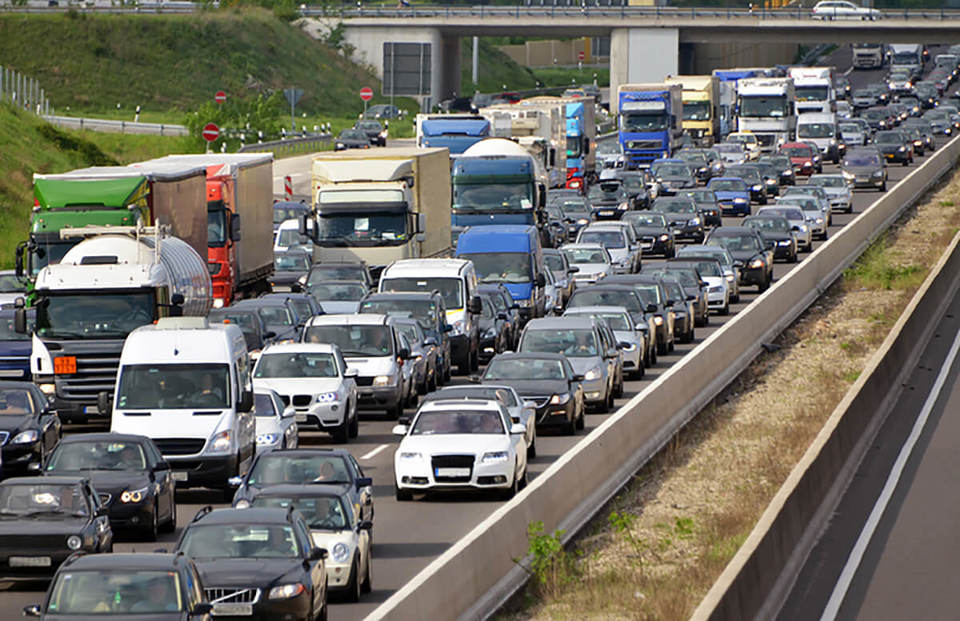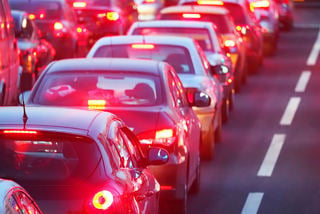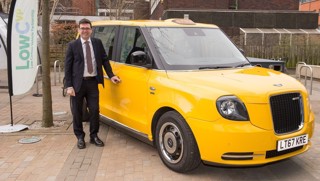This article was first published in the June digital edition of Commercial Fleet on June 25.
Air quality improvements achieved during lockdown, if maintained, could weaken the case for clean air zones (CAZs).
It has been five years since the Department for Environment, Food and Rural Affairs (Defra) published a report highlighting the need for CAZs in six cities.
London, Birmingham, Derby, Leeds, Nottingham and Southampton were projected to fail EU air quality standards by the end of this year, unless action was taken.
Initial Government plans were challenged in the courts, by environmental lobby group Client Earth, for failing to tackle the problem in the shortest possible time.
The Government published its final plan for tackling roadside nitrogen dioxide (NO2) levels in 2017, with 61 local authorities in England now required to tackle illegal levels of pollution.
London introduced its ultra-low emission zone (ULEZ) in April 2019, forcing all but the cleanest vehicles to pay to drive into the city centre.
Several cities, including Leeds and Birmingham, have signalled their intention to follow suit, announcing charging zones of their own, with operators of non-compliant trucks and vans facing daily charges of up to £100 and £12.50 a day, respectively.
Nottingham has decided against a charging CAZ.
It has, instead, employed a range of other measures, including a workplace parking levy and investing in public transport, to ensure it reaches compliance in the shortest possible time.
POLLUTION LEVELS PLUMMET
Covid-19, however, has forced councils to reassess plans and sparked a rapid call for evidence from Government to fully understand the impact coronavirus is having on changes in air pollution emissions, concentrations and exposure.
In the first few weeks of the pandemic, the Government told Commercial Fleet it had agreed with Leeds, Birmingham and Bath to delay the introduction of CAZs in their areas until after January 1, 2021.
Other towns and cities planning to charge vehicles to drive into their CAZs, such as Bristol and Newcastle, were already planning to launch their schemes after that date.
The enforced delay has come as towns and cities are also reporting record reductions in pollution, with low levels of traffic due to lockdown.
In Oxford, 75% of NO2 comes from transport and, with roads clear of congestion, levels are now below the legal limit in the city centre for the first time in generations.
A city council spokesman said: “Since the beginning of lockdown we have seen a 65% reduction in air pollution levels in Oxford city centre.”
To put that historic reduction into perspective, over the decade to 2019, air pollution levels in Oxford had decreased by 36.8%.
It is set to become the first city to introduce a zero-emission zone (ZEZ) next summer, charging all petrol and diesel vehicles to enter the city centre.
Leeds City Council, which will charge Euro V or lower diesel HGVs £50 a day to enter its zone from January 1, 2021, at the earliest, gave no figures, but said pollution levels had fallen due to the quieter roads.
The council added that it was not possible to reliably predict the long-term impact that the coronavirus will have on traffic. However, it did not address the long-term viability of a charging CAZ, if air quality gains are maintained.
Instead, a Leeds City Council spokesman said: “We must be ready to introduce measures that can rapidly improve air quality if emissions begin to return to pre-Covid levels.
“At the same time, the council will continue to promote and enable a shift towards cleaner, greener travel and will encourage the widespread adoption of behaviours, technologies and policies that reduce emissions including use of electric vehicles and working from home.”
In Birmingham, where non-compliant HGVs will be charged £50 and vans £8 per day from January, 2021, at the earliest, the city council revealed that early analysis of the data suggests an average reduction in NO2 of some 36% from the day before the lockdown was introduced to just more than a month later.
The fall correlates to a similar dip in traffic levels, which were at about 30% of the ‘norm’ expected in April.
A Birmingham City Council spokesman explained: “While the Covid-19 lockdown measures have been in place, we have seen a significant reduction in road traffic and a reduction in the levels of nitrogen dioxide.”
However, he said: “As lockdown measures are eased it is highly likely the volume of traffic will increase, and the levels of nitrogen dioxide will return to pre-Covid levels.”
In Bath, where non-compliant HGV’s, buses and coaches will be charged £100, and taxis and vans £9 from January 2021, at the earliest, the council estimates that the average level of NO2 has fallen by some 20% on where it would expect them at this time of year.
However, a spokesman for Bath and North East Somerset Council, said: “Currently there is no evidence that the improvement in air quality seen during the pandemic will be maintained.
“In light of messages around the use of public transport, the reduction of vehicles being updated and replaced for newer, cleaner vehicles and the need for social distancing the NO2 levels within Bath and North East Somerset may well soon continue at the pre-pandemic levels or increase further.”
He added: “Compliance is measured over an annual mean calculation and therefore short-term improvements cannot be taken as definitive proof of a wider trend. Therefore, to suspend or remove the plans would be premature.”
LONG-TERM AIR QUALITY IMPROVEMENTS
New figures from the Department for Transport (DfT) show how low traffic levels fell at the start of the lockdown, but also reveal they are far from back to pre-lockdown levels.
During the first full day of lockdown (Tuesday, March 24), car use fell to less than half (44%) of the expected level. Light commercial vehicle (LCV) use stood at 55%, HGV use at 84%.
Three months later and the day after retail outlets were allowed to open on Monday, June 15, car use had risen, but was still only at 70% of normal levels. Van use and HGV use had grown to 84% and 92%, respectively.
The latest DfT figures, for Monday, June 29, show car use stood at 72%, van use 88% and HGV use 96%
In line with Government advice to avoid public transport, cycling levels have doubled during some weekdays and trebled at the weekend.
Meanwhile, national rail use remains extremely low at 11% and London tube use stands at just 16%.
Long term, technology will continue to reduce the need for face-to-face meetings and more people will continue to work from home or stagger start and finish times, cutting rush hour traffic.
A Fleet News survey shows more than half (53.6%) of fleet managers are currently working from home.
More than half (57.3%) of respondents also said that the majority of company cars they operate were not being driven for work.
It’s clear that the future of CAZs will rely on air quality improvements experienced during the lockdown being maintained long-term.
But the Government CAZ framework states: “Where air quality has improved to the level required and there is evidence this improvement would be maintained, the Government expects local authorities to remove the elements of the zone that are no longer required at the earliest opportunity.”
A Government spokesman told Commercial Fleet it is committed to creating a “green legacy” from the pandemic and building on the unprecedented levels of walking and cycling seen across the country.
“Improving air quality as soon as possible remains vital and we continue to engage with local authorities and keep plans for all clean air zones under constant review,” he said.
TIME TO PAUSE
Natalie Chapman, Freight Transport Association (FTA) head of urban policy, believes Covid-19 presents an opportunity for central and local government to “pause and assess” whether CAZs are the most effective way to improve air quality long-term.
The FTA argues that CAZs will not provide any lasting benefit to air quality, as the Euro VI/6 vehicles required to enter a zone without charge will come into fleets of their own accord, as part of the natural fleet replacement cycle.
Euro VI has been mandatory in all new trucks since 2014; by the start of 2021 – when many of these CAZs are due to go live – FTA estimates that more than half of the UK truck fleet will already be Euro VI.
“The scheme will soon become redundant,” said Chapman. “Instead, Government would be better placed to adopt a more comprehensive range of measures, such as incentivising the uptake of alternatively fuelled and electric commercial vehicles, more effective management of congestion, and enabling more deliveries to be re-timed.”
Visit our interactive CAZ map at www.fleetnews/air-quality-map.























Login to comment
Comments
No comments have been made yet.